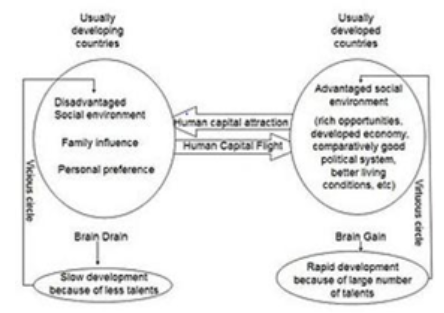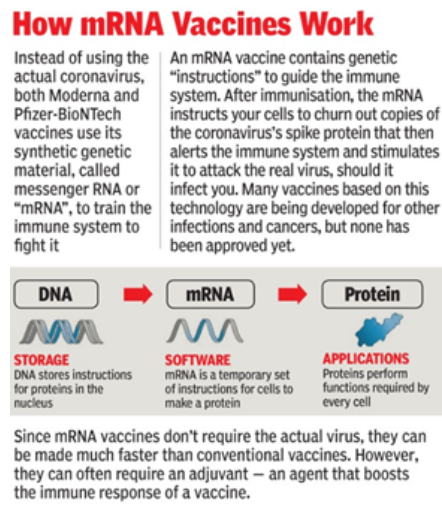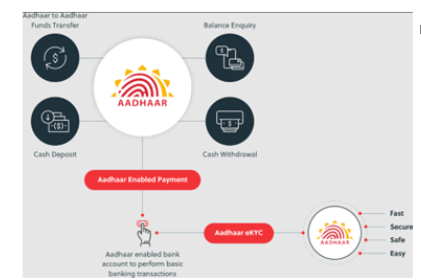Friday, 6th October 2023
Caste Census in Bihar - Edukemy Current Affairs
In News: Recently, the Government of Bihar released findings of the Caste Survey, 2023 which revealed that OBCs and Extremely Backward Classes (EBCs) together constitute 63 % of the 13-crore population, making it the largest caste group in the State.
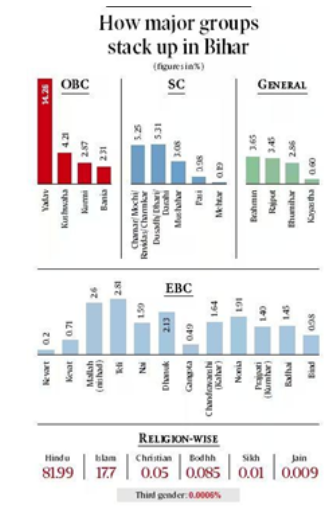
About the Caste Survey:
- The Bihar legislature unanimously passed a resolution agreeing to a caste census, twice: first on February 18, 2019 and then on February 27, 2020.
- The Bihar government in June, 2022 issued notification for conducting a caste survey in the State on its own and subsequently allocated Rs. 500 crore from its contingency fund for the exercise.
- The survey was carried out in two phases which each had its own criteria and objectives.
- 1st Phase: January 7 and 21, the number of households was counted. Enumerators were given a set of 17 questions which were to be mandatorily answered by the respondent.
- 2nd Phase: April 15 and was to be completed in about a month, was intended to collect data on castes, religions, and economic backgrounds, as well as on aspects such as the number of family members living in the state and outside.
Controversy surrounding the Caste Survey:
- The process of Caste Survey was halted after several PILs were filed with the Supreme Court over violation of privacy and on the argument that only the Centre had the authority to conduct a “census”.
- The Supreme Court assigned Patna High Court to look into the issue. The Government of State of Bihar submitted that it was a “survey”, and assured that no one’s data would be divulged.
- Concerns were also raised regarding the modalities of the survey and over several sub-castes not being covered.
Differences between Caste Census and Caste Survey:
- Caste census: More precisely Socio Economic caste census was conducted for the first time in Independent India in 2011. However the findings were never made public. The last published data for all castes was done in the 1931 census.
- All the personal information given in the SECC is open for use by Government departments to grant and/or restrict benefits to households
- Caste Survey: Since only the Union government has the power to conduct a census, several state governments like Bihar and Odisha have been conducting socio economic caste surveys to ascertain the social and economic status of different castes for better policy making.
- State governments use the Caste survey data for informed policy making of state policies.
Significance of Caste Survey:

- Targeted and effective policy making: Caste census will generate exhaustive data which will allow policymakers to develop effective policies and implementation strategies for marginalised classes.
- Reservation based on data: The current policies are based on the last caste census of 1931. The new survey would help in identifying the most benefited section and rationalise their share in the overall reservation.
- Better targeting of Government welfare schemes: Caste census data can help to better target government welfare schemes to the most marginalised sections of the community. For example, in Bihar, 22.6 million people are excluded from food subsidies despite being eligible.
- Social Justice: The census will help to address unequal distribution of wealth, resources and education in a democratic, scientific and objective manner. This will lead to social justice in the country.
- Fulfilment of Constitutional Mandate- Our Constitution favours conducting a caste census. Article 340 mandates the appointment of a commission to investigate the conditions of socially and educationally backward classes and make recommendations as to the steps that should be taken by governments.
- Caste census data for equitable policymaking: Caste survey data can help to fulfil the objectives of various commissions, such as the Sachar Committee and the Justice Rohini Commission, by providing data on the socio-economic and educational status of different castes.
- Break the myths associated with castes: Caste survey will reveal the actual data on castes and remove ambiguities associated with the caste. For example, In Karnataka, there were claims that among the castes, the Lingayats are the most numerous.
Disadvantages of Caste Survey:
- Caste census-A double-edged sword: Caste census can be used by political parties for narrow gains, encouraging caste-based mobilisation and weakening the notion of caste in India.
- Demand for increased reservation: Caste census may increase demand for larger or separate quotas. For instance, Patels, Gujjars, Jats and other castes are demanding reservations. Caste survey may restart the conversations over breaching 50% reservation as determined in Indira Sawhney case.
- Potential Stigmatisation: Disclosure of caste identities could lead to individuals being stigmatised or discriminated against based on preconceived notions associated with certain castes
- Caste identity assertion: Caste survey may lead to hardening of caste identities that may hamper growth of national integration.
- Demand for caste surveys by other states.
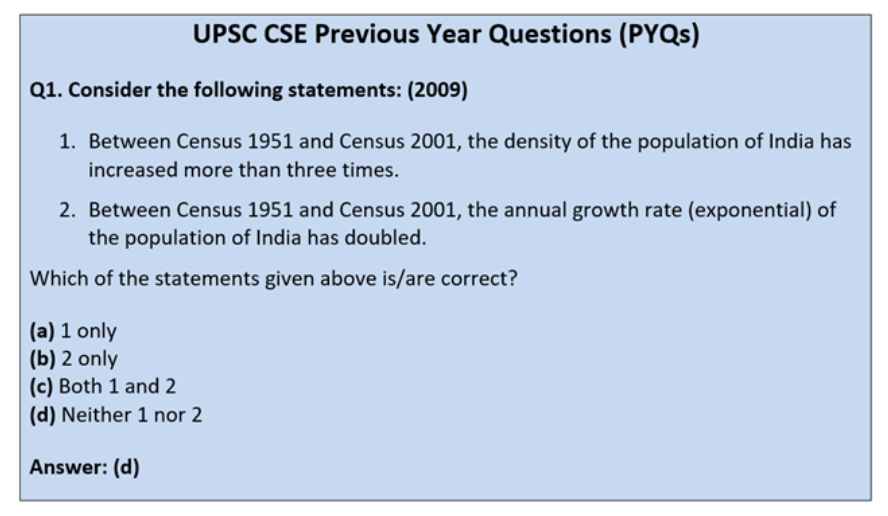
Source https://indianexpress.com/article/india/bihar-caste-survey-ebc-obc-population-8965116/
Social Audit of MGNREGA Scheme
In News: MGNREGS social audit unit in a state of paralysis in many States.
About
An essential part of India's social welfare programmes, the Mahatma Gandhi National Rural Employment Guarantee Act (MGNREGA), has been tainted by ongoing worries about a high level of corruption. Despite the program's inclusion of mechanisms like social audit units, recent statistics show that fund recovery and overall effectiveness have suffered.
Recent Statistics
Recent statistics for the fiscal year 2023-24 indicate that social audit units identified misappropriations amounting to Rs. 27.5 crore under MGNREGA.
After implementing corrective measures, this figure decreased to Rs. 9.5 crore. However, only a meager Rs. 1.31 crore, equivalent to 13.8% of the total misappropriated funds, has been successfully recovered.
A similar trend of inefficiency in fund recovery is evident in previous fiscal years:
- In 2022-23, the recoverable amount was Rs. 86.2 crore, but only Rs. 18 crore, or 20.8% of the total, was recovered.
- During the fiscal year 2021-22, Rs. 171 crore was identified as misappropriated, but only Rs.26 crore, representing a mere 15% of the total, was successfully recovered.
These consistently low rates of fund recovery raise significant concerns about the effectiveness of the program in combating corruption. Furthermore, the persistently low recovery rate jeopardizes the credibility of the entire audit process, posing a threat to public trust in the integrity and purpose of MGNREGA.
About Social Audit Mechanism
- A social audit is the analysis and evaluation of a programme or scheme that involves the active participation of the public and the comparison of official records with actual ground realities. It is an effective tool for promoting social change, civic engagement, and government transparency.
- Social audit is difference from the Financial audit, social audits focus on evaluating a program's effectiveness in achieving its social goals by involving stakeholders, while the financial audits examine financial records to determine an organization's financial health.
Social Audit Mechanism under MGNREGA
- The social audit mechanism under the Mahatma Gandhi National Rural Employment Guarantee Act (MGNREGA) is governed by Section 17 of the Act, which mandates the social audit of all projects carried out under MGNREGA.
- The procedures and responsibilities related to social audits are detailed in the Audit of Scheme Rules, 2011, also known as the Mahatma Gandhi National Rural Employment Guarantee Audit of Schemes Rules, 2011.
- These rules were developed through collaboration between the Ministry of Rural Development and the Comptroller and Auditor General (CAG) of India.
- They provide a framework for conducting social audits and delineate the roles and responsibilities of various entities, including the Social Audit Unit (SAU), state governments, and MGNREGA field workers, to be implemented nationwide.
However, several issues have hindered the effectiveness of the social audit mechanism under MGNREGA:
- Fund-Starved Units: Social audit units often face financial constraints that impede their ability to function effectively. While the Union government is responsible for providing funds to these units to ensure their independence from state influence, delays in fund allocation have left units in states like Karnataka and Bihar without funds for nearly two years.
- Lack of Training: Inadequate training and resources have further hampered the effectiveness of social audit units in identifying malpractice and irregularities. Adequate training is essential for audit personnel to carry out their responsibilities effectively.
- Personnel Shortage: Insufficient staffing within social audit units poses a significant challenge. The lack of personnel makes it difficult for these units to conduct thorough audits and investigations, limiting their ability to uncover corruption and mismanagement.
- Low Recovery Rate: Some states, including Gujarat, Goa, Meghalaya, Puducherry, and Ladakh, have consistently reported "zero cases" and "zero recoveries" over the past three years, raising questions about the effectiveness of monitoring and accountability mechanisms in these regions. Even states like Telangana, which have active social audit units, struggle with low recovery rates, indicating potential gaps in the system's ability to rectify financial irregularities.
Strategies to enhance the effectiveness of the MGNREGA social audit mechanism:
- Engaging Stakeholders: Ensure the active involvement of all stakeholders, including beneficiaries, civil society organizations, government officials, and auditors, in the assessment and redesign of the social audit process.
- Investing in Capacity Building: Allocate resources to invest in comprehensive training and capacity-building programs for auditors responsible for conducting social audits. Enhancing their skills and knowledge will enable them to carry out their roles more effectively.
- Whistleblower Protection: Establish a robust mechanism for safeguarding whistleblowers who report irregularities or corruption in MGNREGA projects. Create an environment where individuals feel secure coming forward with information, free from the fear of retaliation.
- Community Participation: Encourage active engagement of local communities in the audit process. Empower them to monitor project progress, scrutinize fund utilization, and report any discrepancies. Additionally, establish Grievance Redressal Committees at the village level to promptly address issues that arise.
- Feedback Mechanism: Implement a feedback loop where audit findings are used to drive improvements within the MGNREGA program. Identify systemic issues and actively work towards continuous enhancement of the program's efficiency and transparency.
|
UPSC CSE Previous Year’s Questions
(a) Adult members of only the scheduled caste and scheduled tribe households (b) Adult members of below poverty line (BPL) households (c) Adult members of households of all backward communities (d) Adult members of any household Answer: (d) |
Illicit Trade in India - Edukemy Current Affairs
Why in News: As per a report released by FICCI CASCADE titled ‘Hidden Streams: Linkages Between Illicit Markets, Financial Flows, Organised Crime and Terrorism’, the illegal economy in India has an overall score of 6.3 in India, which is higher than the average score of 5 of other 122 countries.
FICCI CASCADE:
- FICCI CASCADE (Committee Against Smuggling and Counterfeiting Activities Destroying Economy), is an initiative by the Federation of Indian Chambers of Commerce and Industry (FICCI).
- In order to solve the urgent problem of the illegal trade in counterfeit, pass-off, and smuggled goods in India and throughout the world, it was founded on January 18th, 2011.
Illicit Trade:
- The unlawful exchange of goods, services, or commodities that evade existing rules, regulations, or controls imposed by governments or international organisations is referred to as illicit trade.
- These activities take place outside of the law and frequently entail smuggling, tax evasion, money laundering, counterfeiting, piracy, and other illegal acts.
Key Highlights of the Report:
- Overview of Illicit Trade in India:
- 3.5 tonnes of gold, 18 crore cigarette sticks, 140 metric tonnes of Red Sanders, and 90 tonnes of heroin were seized in the Financial Year of 2022-23.
- India's score of 4.3 is lower than the average score of 5.2 for 122 nations, indicating that organised crime players are less present but that criminal networks still have a considerable impact.
- Value Gap India (2009-2018): Between 2009 and 2018, India lost an estimated total of USD 13 billion in potential income as a result of incorrect import and export invoices. Value-added tax (VAT) that was not collected was USD 3.4 billion, which went towards the revenue shortfall.
- Terror and Crimes: In 2021, the cost of combating terrorism and crime in India was estimated to be USD 1170 billion at purchasing power parity (PPP), or nearly 6% of GDP (Gross Domestic Product).
- Drug Economy:
- Due to its proximity to important drug-producing regions like the Golden Triangle (Myanmar, Laos, and Thailand) and the Golden Crescent (Afghanistan, Pakistan, and Iran), operations that might entail the distribution and transit of controlled drugs have been linked to India.
- There has been an increase in the illicit drug trade in India, with 3,172 drug seizure incidents reported from 2014 to 2022 compared to 1,257 occurrences from 2006 to 2013.
- India scores significantly higher than the benchmark norm of 5.4 for cannabis, with a score of 7.5. With ratings of 6.5, the trade in synthetic drugs and heroin likewise performs better than the benchmark average.
- Organised Crime and Illegal Economy:
- India's organised crime players have a low overall score—4.3—compared to the 122-country average of 5.2.
- However, the criminal network has a major impact in India and gets a score of 6, which is greater than the global average of 122 nations, which is 5.8.
- The total score of the unlawful economy in India is 6.3, which is higher than the average score of 5 among 122 nations.

Role of Government Agencies in Checking Illicit Trade in India:
- Central Bureau of Investigation (CBI): It investigates a wide range of criminal activities, including corruption, economic offenses, and cases related to organized crime.
- Narcotics Control Bureau (NCB): It coordinates with other law enforcement agencies to address the illicit drug trade and associated criminal activities.
- Enforcement Directorate (ED): It investigates economic offenses, including money laundering and illicit financial activities and plays a crucial role in tracking and seizing assets acquired through illicit means.
- National Investigation Agency (NIA): It investigates and combats terrorism and offenses that have national and transnational implications.
International conventions against illicit trade which India has signed:
- United Nations Single Convention on Narcotics Drugs 1961.
- United Nations Convention on Psychotropic Substances, 1971.
- United Nations Convention Against Illicit Traffic in Narcotic Drugs and Psychotropic Substances, 1988.
- United Nations Convention Against Transnational Organized Crime, 2000.
- World Trade Organization Agreement on Trade-Related Aspects of Intellectual Property Rights.
|
UPSC CSE Previous Years’ Questions Prelims
Which of the statements given above are correct? (a) 1 and 3 only (b) 2, 3 and 4 only (c) 2 and 4 only (d) 1, 2, 3 and 4 Answer: (c) |
Mains
- In one of the districts of a frontier state, narcotics menace has been rampant. This has resulted in money laundering, mushrooming of poppy farming, arms smuggling and near stalling of education. The system is on the verge of collapse. The situation has been further worsened by unconfirmed reports that local politicians as well assume senior police officers are providing surreptitious patronage to the drug mafia. At that point of time a woman police officer, known for her skills in handling such situations is appointed as Superintendent of Police to bring the situation to normalcy.
If you are the same police officer, identify the various dimensions of the crisis. Based on your understanding, suggest measures to deal with the crisis. (2019)
Review of Maritime Transport 2023: UNCTAD
Why in News: Recently, the United Nations Conference on Trade and Development (UNCTAD) has released the Review of Maritime Transport 2023, highlighting the Issue of Greenhouse Gas (GHG) Emissions from International Shipping and Challenges in Decarbonization.
Key Highlights of the Review:
- Emissions from International Shipping: International shipping contributed 20% more greenhouse gas emissions in 2023 than it did ten years earlier. The shipping sector accounts for more than 80% of worldwide commerce volume and around 3% of greenhouse gas emissions.
- Shipping Volume rise: In 2022, the amount of marine transport worldwide decreased by 0.4% as a result of Covid-19's impacts on global supply chains. But in 2023, it is anticipated to increase by 2.4%. The containerized trade sector is predicted to expand by 1.2% in 2023 and then by 3% from 2024 to 2028.
- Alternative Fuels requirement: Conventional fuels including heavy fuel oil, light fuel oil, and diesel/gas oil are used by 98.8% of the world's fleet. Only 1.2% of vehicles use alternative fuels, mostly LNG, LPG, and methanol, with battery and hybrid vehicles coming in second.
- Cost Estimates: The yearly investment needed to decarbonize the world's fleet by 2050 might range from USD 8 billion to USD 90 billion.
UNCTAD's Recommendations for Economic Incentives:
- For more recent ships with dual-fuel engines, renewable ammonia and methanol fuels are thought to be a better option.
- On a "well-to-wake" basis, sustainable marine fuels should have carbon dioxide equivalent emissions that are zero or almost zero.
- UNCTAD supports system-wide coordination, prompt regulatory action, and increased financial support for green technology and fleets.
- Economic incentives may boost the competitiveness of alternative fuels and encourage investments in infrastructure that is climate-resilient, such as taxes or contributions based on shipping emissions.
- In order to combine environmental objectives with economic requirements, it is important to remember that the cost of inaction surpasses the necessary investments.
- In addition to using cleaner fuels, the shipping sector has to move more quickly towards digital technologies like blockchain and artificial intelligence (AI) to increase efficiency and sustainability.
Global Initiatives to Decarbonize International Shipping:
- Energy Efficiency Existing Ship Index (EEXI): It limits the technical carbon intensity of the ship by limiting how much carbon dioxide the ship is designed to emit based on its size and ship type, and the Carbon Intensity Indicator (CII), which grades ships from A-E based on their operational carbon intensity, based on how much fuel the ships use each year.
- IMO is developing new regulations called Mid-Term Measures, which will include a technical element, most likely a Greenhouse Gas Fuel Standard (GFS), as well as an economic element, such as a carbon levy, a feebate system, or cap-and-trade.
- Green Voyage 2050 Project: An initiative to reform the shipping sector towards a future with reduced carbon emissions was started in May 2019 as a cooperation between the Government of Norway and IMO.
- International Convention for the Prevention of Pollution from Ships (MARPOL Convention): It is the main international convention covering prevention of pollution of the marine environment by ships from operational or accidental causes. The MARPOL Convention was adopted on 2nd November 1973 at IMO.
https://www.downtoearth.org.in/news/environment/international-shipping-emissions-increased-by-20-in-the-last-decade-unctad-92019#:~:text=In%202023%2C%20greenhouse%20gas%20(GHG,Trade%20and%20Development%20(UNCTAD).
India and Argentina Sign Social Security Agreement
Why in news? Recently, India and Argentina signed a 'Social Security Agreement (SSA)' to ensure legal rights of professionals in each other’s domain that will assist in risk-free international mobility.
About:
- It ensures that the rights of professionals and workers in both countries are protected against the loss of social security benefits or contributions.
- The SSA covers areas related to old-age benefits, survivor’s pensions, and permanent, total disability pensions for employed individuals in India.
- In Argentina, it applies to contributory benefits provided by the Social Security System.
- The agreement ensures that detached workers and their family members, who temporarily work in another country, retain their rights to contributory benefits under local legislation without reduction, modification, suspension, suppression, or retention.
- The SSA establishes the legal framework for regulating the insurance period, which includes the period of services credited with contributions, contributory benefits, and their export for detached workers.
- This framework also covers crew members of airlines and ships.
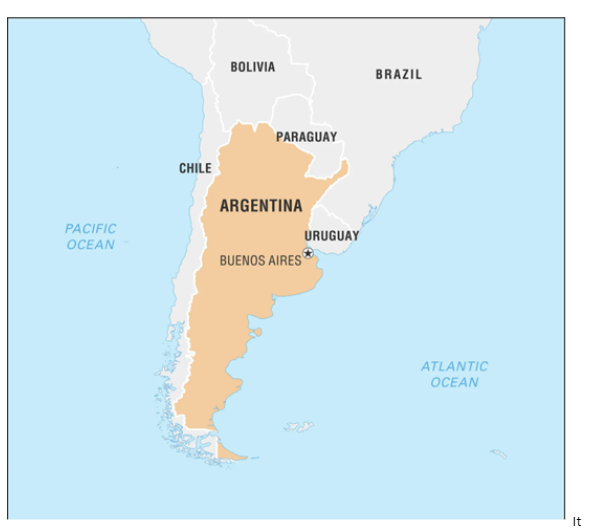
- It ensures the smooth export of these benefits to the home country of the worker.
South China Sea Indo-Pacific Tensions
Why in news? A recent dispute between China and the Philippines over a lagoon in the South China Sea turns the spotlight on simmering tensions in the strategic waters with ramifications to all countries in the Indo-Pacific region, including India.
About:
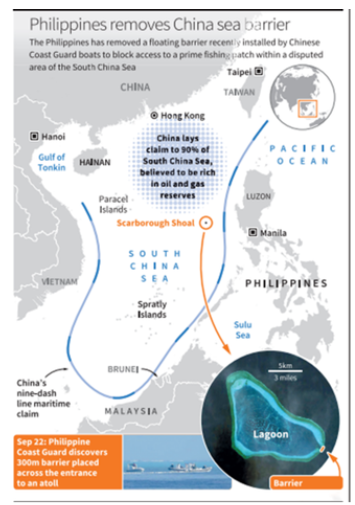
- The South China Sea is bordered by China and Taiwan to the north, the Indo-Chinese peninsula (including Vietnam, Thailand, Malaysia, and Singapore) to the west, Indonesia and Brunei to the south, and the Philippines to the east (referred to as the West Philippine Sea).
- It is connected by the Taiwan Strait with the East China Sea and by the Luzon Strait with the Philippine Sea (both marginal seas of the Pacific Ocean).
- Comprise three archipelagoes, namely, the Spratly Islands, Paracel Islands, Pratas Islands and Macclesfield’s Bank and Scarborough Shoal.
Trade Importance:
-
- Approximately USD 3.37 trillion worth of trade passed through the South China Sea in 2016, making it a crucial global trade route.
- According to the Center for Strategic and International Studies (CSIS), 80% of global trade by volume and 70% by value is transported by sea, with 60% of it passing through Asia and one-third of global shipping moving through the South China Sea.
- The South China Sea is also a rich fishing ground, providing a vital source of livelihood and food security for millions of people in the region.
Dispute:
- China’s Nine Dash Line: Defines area claimed by China - by far the largest portion of the Sea.
- Scarborough Shoal: Claimed both by the Philippines and China (known as Huangyan Island in China).
- Spratlys: Occupied by claimants, which consist of Taiwan, Vietnam, the Philippines, China and Malaysia.
- Paracel Islands: Subject of overlapping claims by China, Vietnam, and Taiwan.
- Island Chain Strategy: A geographical security concept crafted by the United States in the 1940s to deter China and the Soviet Union’s maritime ambitions.
Illicit Trade of Tortoises and Hard-Shell Turtles
Why in news? A new study has found that Chennai is the highest-ranked node in the tortoise and hard-shell turtle trafficking network fuelling the global pet trade.
About:
- It was conducted by experts associated with the Counter Wildlife Trafficking Programme of the Wildlife Conservation Society-India.
Key Highlights of the Report
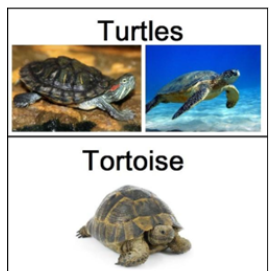
- The study found that the tortoise and hard-shell turtle network had a more extensive geographical scale with more international trafficking links compared to the soft-shell turtle network.
- Soft-shell turtle trafficking is primarily domestic in nature. International trafficking of soft-shell turtles to and from India is mostly limited to Bangladesh.
- Chennai emerges as the primary node in the tortoise and hard-shell turtle trafficking network.
- Mumbai, Kolkata, Bengaluru, Anantapur, Agra, North 24 Parganas (in West Bengal), and Howrah (near the India-Bangladesh border) are also crucial in the network, contributing significantly to the trafficking of tortoises and turtles.
- Wild populations of tortoises and freshwater turtles face immense pressure from illegal trade for pets, food, and medicines.
- Turtles involved in the illegal trade often arrive dehydrated, starved, and with injuries.
- High mortality rates among trafficked turtles highlight the urgency of addressing this issue.
|
Softshell turtle
Tortoises or hard-shelled turtles
|
R21/Matrix-M Malaria Vaccine - Edukemy Current Affairs
Why in news? Recently, The World Health Organization (WHO) has recommended a new vaccine, R21/Matrix-M, for the prevention of malaria in children.
About:
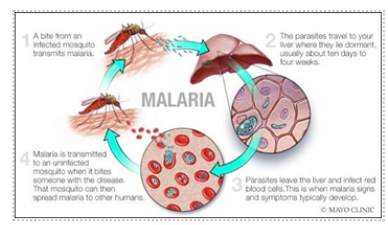
- R21 Vaccine is the second malaria vaccine recommended by the WHO, following the RTS, S/AS01 vaccine, which received a WHO recommendation in 2021.
- It was developed by the University of Oxford and the Serum Institute of India with support from the European and Developing Countries Clinical Trials Partnership ('EDCTP'), the Wellcome Trust, and the European Investment Bank ('EIB').
- The Matrix-M component is a proprietary saponin-based adjuvant developed by Novavax and licensed to the Serum Institute for use in endemic countries.
- An adjuvant is an ingredient in a vaccine that enhances the immune system’s response to that vaccine.
- Matrix-M adjuvant is derived from saponins, naturally occurring compounds found in the bark of the Quillaja saponaria tree in Chile. Saponins have a history of medicinal use.
- As of now, the vaccine has been licensed for use in Ghana, Nigeria and Burkina Faso.
- It is the first malaria vaccine to reach the WHO’s target of 75% efficacy.
Malaria:
- It is a life-threatening disease caused by parasites that are transmitted to people through the bites of infected female Anopheles mosquitoes.
- There are 5 parasite species that cause malaria in humans, and 2 of these species, Plasmodium falciparum, and Plasmodium vivax, pose the greatest threat.
- Malaria is common in tropical areas where it’s hot and humid.
- Symptoms include Fever, Fatigue, Vomiting, Headaches, and Shaking chills.
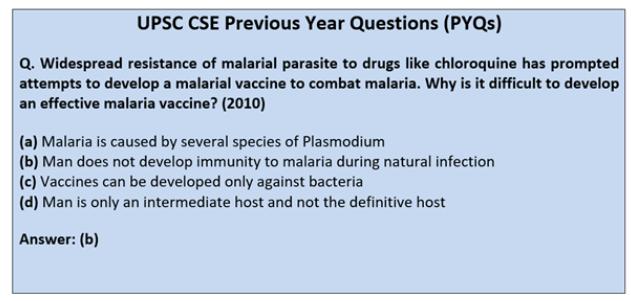
Nagorno-Karabakh Region - Edukemy Current Affairs
Why in news? Recently, Azerbaijan launched a military operation in the disputed Nagorno-Karabakh region, resulting in casualties.
About:
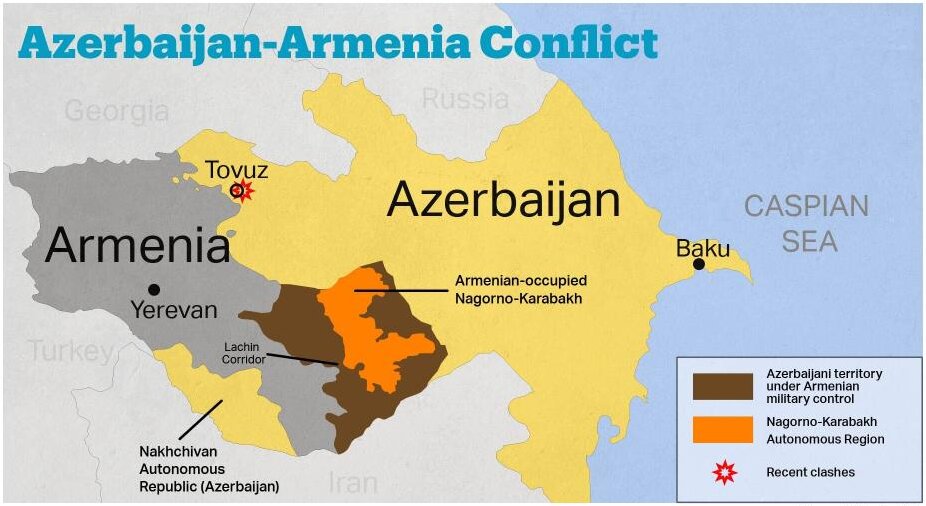
- Nagorno-Karabakh, known as Artsakh by Armenians, is a landlocked mountainous area in the Caucasus region (the transcontinental region between the Black Sea and the Caspian Sea).
- The Nagorno-Karabakh conflict is an ethnic and territorial dispute between Armenia and Azerbaijan.
- A ceasefire mediated by Russia in 1994 left the region under Armenian control, though it’s still recognized as part of Azerbaijan.
- It is internationally recognised as part of Azerbaijan, but its inhabitants are predominantly ethnic Armenians.
- The area is now governed by separatist Armenians and called the “Nagorno-Karabakh Autonomous Oblast.”
Azerbaijan
- It is a former Soviet republic nation and is bounded by the Caspian Sea and Caucasus Mountains, which span Asia and Europe.
- It is bordered by Russia, Georgia, Armenia, and Iran.
- Its capital, Baku, is famed for its medieval walled Inner City.
Delhi Measles Outbreak: Urgent Vaccination Needed
Why in news? Capital is witnessing a significant spike in the number of measles cases along with the number of fatalities.
About:
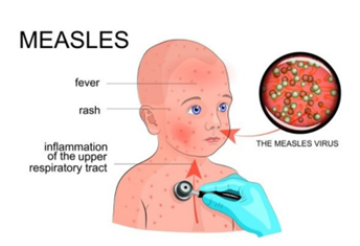
- It is a highly contagious and serious airborne disease and mostly affects children.
- Caused by:
- It is caused by a single-stranded, enveloped RNA virus with 1 serotype. It is classified as a member of the genus Morbillivirus in the Paramyxoviridae family.
- Transmission:
- It is spread by coughing and sneezing, close personal contact or direct contact with infected nasal or throat secretions.
- The virus infects the respiratory tract, then spreads throughout the body, causing severe disease, complications and even death.
- It can cause serious complications, including blindness, encephalitis, severe diarrhoea, ear infection and pneumonia.
- Symptoms
- The first sign of measles is usually high fever, beginning about 10 to 14 days after exposure to the virus and lasting four to seven days.
- A runny nose, cough, red and watery eyes, and small white spots inside the cheeks can develop in the initial stage.
- A rash erupts after several days, usually on the face and upper neck. The rash spreads over about three days, eventually reaching the hands and feet, and lasts five to six days before fading.
- Treatment:
- No specific antiviral treatment exists for measles but there is a vaccine to stay protected from the disease, which is both safe as well as cost effective.
- Treatment includes providing comfort measures to relieve symptoms, such as rest, and medications like antibiotics, fever reducers and Vitamin A.
Biofuels a Viable Energy Source
Exam view: Global Biofuels Alliance, Biofuels, Different Categories of Biofuels, Pradhan Mantri JI-VAN Yojana 2019, National Policy on Biofuels, 2018, Ethanol Blending.
About
Prime Minister Narendra Modi, launched the Global Biofuel Alliance (GBA) on the sidelines of the G20 Summit in New Delhi. The GBA intends to expedite the global uptake of biofuels through facilitating technology advancements, intensifying the utilization of sustainable biofuels, shaping robust standard setting and certification through the participation of a wide spectrum of stakeholders.
About Biofuels
- Biofuels encompass hydrocarbon fuels derived from organic matter within a relatively short timeframe, typically spanning days, weeks, or months.
- Biofuels find utility in powering vehicles, heating residences, and generating electricity. The renewable nature of biofuels is attributable to their production from plants, which can be repeatedly cultivated.
- Biofuels come in diverse forms, including solid, liquid, and gaseous varieties.
- Solid biofuels comprise materials like wood, dried vegetation, and manure.
- Liquid biofuels encompass bioethanol and biodiesel
- Gaseous biofuels include biogas.
- Biofuels serve as substitutes or complementary options to traditional fossil fuels across multiple applications, such as heat and electricity generation.
- The rationale for transitioning to biofuels stems from factors like escalating oil prices, the emission of greenhouse gases resulting from fossil fuel usage, and the desire to provide farmers with an additional source of income by producing fuel from agricultural crops.
Advantages of Biofuels:
- Renewable Source: Biofuels are derived from biomass, which can be regrown, making them a sustainable and renewable energy source. This reduces the reliance on finite fossil fuel reserves.
- Enhanced Energy Security: Utilizing biofuels reduces dependence on foreign oil imports, thereby enhancing energy security by decreasing the vulnerability to international oil supply disruptions and fluctuating oil prices.
- Reduced Greenhouse Gas Emissions: Biofuels typically emit fewer greenhouse gases (GHGs) compared to fossil fuels when burned, contributing to mitigating climate change and improving air quality. This cleaner energy option helps reduce the overall carbon footprint.
- Increased Farmer's Income: Biofuel production often involves agricultural crops, providing an additional source of income for farmers. This can contribute to the economic well-being of rural communities and align with the goals of increasing farmers' income.
- Diverse Feedstock Sources: Biofuels can be produced from a wide range of feedstock sources, including various crops, agricultural waste, and algae. This diversity of sources offers flexibility and adaptability in biofuel production, helping to meet different energy needs and reduce competition for resources.
Challenges and Concerns Regarding Biofuels Viability:
- Land and Water Resource Utilization: Biofuel production often demands significant amounts of land and water resources. In regions with limited agricultural surplus, diverting arable land for biofuel crops can be impractical, potentially leading to conflicts over land use.
- Competition with Food Production: A key concern is the competition between biofuel production and food production for land and resources. If biofuels are prioritized over food crops, it may result in higher food prices, food scarcity, and food security issues, which can have negative social and economic implications.
- Indirect Land Use Change (ILUC): Some biofuels, especially those produced from crops grown on land that was previously forested or converted from natural habitats, can inadvertently contribute to deforestation and habitat loss. This, in turn, can lead to higher greenhouse gas emissions than those associated with fossil fuels, a phenomenon known as ILUC.
- Energy Input vs. Energy Output: If the energy input required for cultivating, processing, and transporting biofuel crops exceeds the energy output from the resulting biofuels, it can undermine their environmental and economic benefits.
- Impact on Biodiversity: The large-scale cultivation of biofuel crops can impact biodiversity by displacing natural ecosystems and reducing habitat availability for wildlife.
- Water Scarcity: Biofuel production, especially in water-scarce regions, can exacerbate water stress and competition for water resources. This can have negative environmental and social consequences.
- Technological Advancements: Advances in biofuel production technologies are essential to address some of these concerns, such as improving energy efficiency, minimizing land and water use, and reducing GHG emissions.
Global Biofuel Alliance
Global Biofuel Alliance (GBA) alliance brings together major biofuel producers and consumers, such as the US, Brazil, and India. Nineteen countries and 12 international organizations have already agreed to join or support the GBA. The GBA aims to strengthen global biofuels trade for a greener sustainable future.
Significance for India:
- Learning and Technology Transfer: GBA provides India with the opportunity to learn from the best practices of other member countries, facilitating the transfer of advanced biofuel technologies. This can help India accelerate progress in areas like compressed biogas and third-generation ethanol production.
- E-20 Target: India's goal of achieving E20 by 2025-26 aligns with the objectives of GBA. Learning from Brazil's success in achieving E-85 can expedite India's efforts to increase ethanol blending in gasoline.
- Flex Fuel Vehicles: The alliance could promote the adoption of flex fuel vehicles in India, which can run on a range of biofuels, reducing emissions and decreasing the country's crude oil import bill.
- Climate Action: By promoting biofuels and reducing the usage of fossil fuels, GBA reinforces India's commitment to climate action and contributes to global efforts to combat climate change.
- Promotion of Biofuel Exports: GBA presents an opportunity for India to increase its biofuel production and become a major exporter, enhancing energy independence and bolstering its share in the global biofuel market.
- Employment Opportunities: Investments in the biofuel sector can create employment opportunities, particularly in rural areas, benefiting farmers and contributing to the government's goal of doubling farmers' income.
Concerns about Viability of Global Biofuels Alliance:
- Transfer of Technology: Some developed countries may be reluctant to share advanced biofuel technology, potentially hindering the alliance's objectives. Technological secrecy can pose a challenge to technology transfer.
- Geopolitical Contestation: Opposition from countries like China and Russia, as well as concerns from major oil producers like Saudi Arabia and Russia, could create geopolitical challenges for the alliance.
- Funding Limitations: Structuring sustainable financing mechanisms for biofuel projects is crucial, and global financial institutions like the World Bank and IMF may have limitations in providing sufficient resources.
- Import Restrictions: India's policies restricting the import of biofuels could impact the development of the global biofuels market and hinder the alliance's goals of trade expansion.
- Environmental Implications: The growing demand for biofuels can have environmental implications, including increased water and land requirements, which may deter participation from water-scarce countries and necessitate careful environmental management.

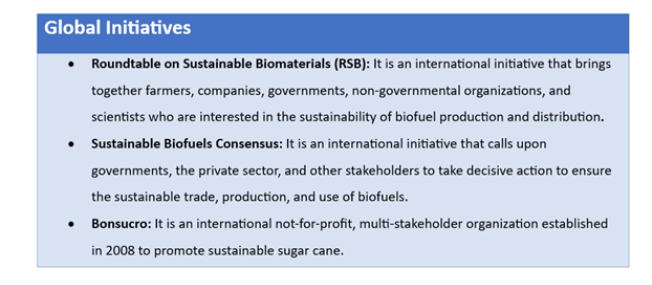
Biofuels, though having the potential to be a significant source to combating climate change, face uncertainty regarding their practicality. The Global Biofuel Alliance offers hope for a more environmentally friendly future, but its real-world impact is yet to be determined. In countries like India, where agricultural surplus is scarce, the feasibility of biofuels as a primary energy source may be limited. Nonetheless, they can still contribute to a more sustainable future by focusing on responsible production and consumption practices.
|
UPSC CSE Previous Year’s Question (PYQs) Prelims Q. According to India’s National Policy on Biofuels, which of the following can be used as raw materials for the production of biofuels? (2020)
Select the correct answer using the code given below: (a) 1, 2, 5 and 6 only Answer: (a) |
https://www.thehindubusinessline.com/opinion/are-biofuels-a-viable-energy-source/article67362908.ece
Share the article
Edukemy’s Current Affairs Quiz is published with multiple choice questions for UPSC exams
MCQ
Get Latest Updates on Offers, Event dates, and free Mentorship sessions.

Get in touch with our Expert Academic Counsellors 👋
FAQs
UPSC Daily Current Affairs focuses on learning current events on a daily basis. An aspirant needs to study regular and updated information about current events, news, and relevant topics that are important for UPSC aspirants. It covers national and international affairs, government policies, socio-economic issues, science and technology advancements, and more.
UPSC Daily Current Affairs provides aspirants with a concise and comprehensive overview of the latest happenings and developments across various fields. It helps aspirants stay updated with current affairs and provides them with valuable insights and analysis, which are essential for answering questions in the UPSC examinations. It enhances their knowledge, analytical skills, and ability to connect current affairs with the UPSC syllabus.
UPSC Daily Current Affairs covers a wide range of topics, including politics, economics, science and technology, environment, social issues, governance, international relations, and more. It offers news summaries, in-depth analyses, editorials, opinion pieces, and relevant study materials. It also provides practice questions and quizzes to help aspirants test their understanding of current affairs.
Edukemy's UPSC Daily Current Affairs can be accessed through:
- UPSC Daily Current Affairs can be accessed through Current Affairs tab at the top of the Main Page of Edukemy.
- Edukemy Mobile app: The Daily Current Affairs can also be access through Edukemy Mobile App.
- Social media: Follow Edukemy’s official social media accounts or pages that provide UPSC Daily Current Affairs updates, including Facebook, Twitter, or Telegram channels.

